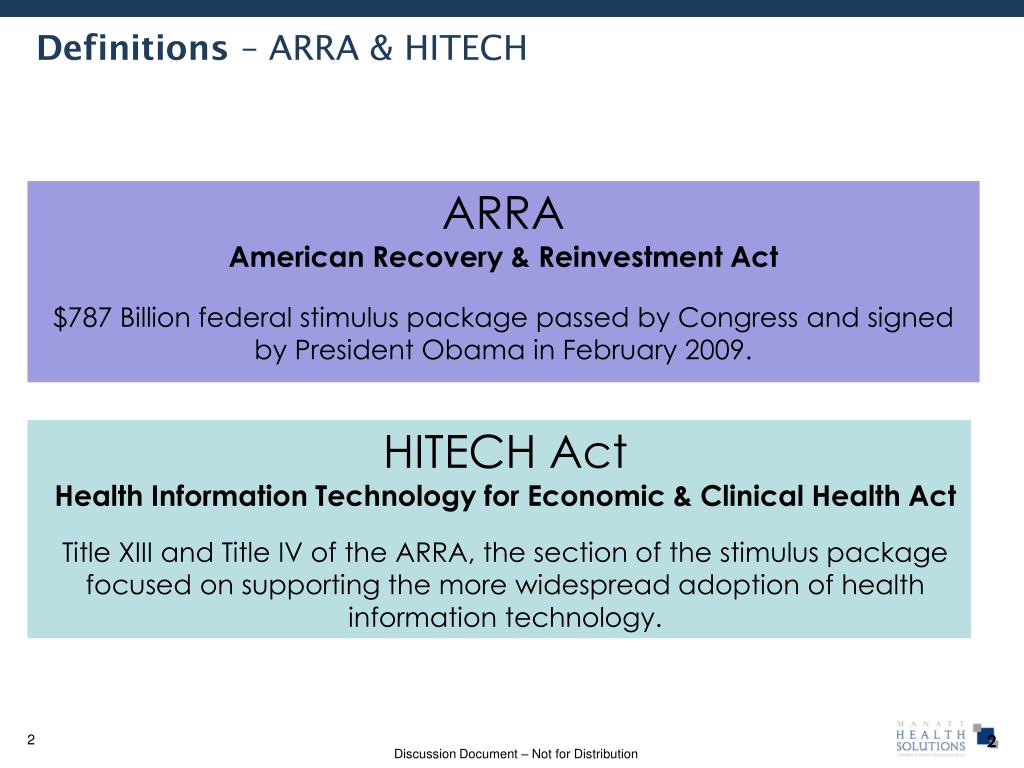“The world changed yesterday at 1 pm Mountain time,” Steve Lieber, President of the Health Information Management Systems Society (HIMSS), told over 1,500 attendees of a webinar on February 18. These new times, Lieber said, “will require our vendor community to react a little bit differently and change business practices.” Lieber said that health information technology vendors will need to be, in his words, “more forthcoming” as well as “make absolute iron clad binding agreements.”
The bottom line: time is of the essence, based the HIT details written within the 1,100 pages of The American Recovery and Reinvestment Act of 2009 (ARRA)…aka, “the stimulus bill.”
Lieber called ARRA, “the most important legislation to ever impact health IT.”
With the economy “in the tank,” the deficit out of control, and increasing joblessness, President Obama included health IT in a bill that he knew would pass. Lieber said that the President used this opportunity to fund HIT policy.
The amount of funding related to HIT is about $20 billion. Never before in the American health system has there ever been such an investment, especially at one time, Lieber told those of us listening on the line.Some money will flow in the current calendar year, some dollars will flow in subsequent years, and some funding will be available until they are completely spent.
Nine areas will receive HIT funding:
1. The Office of the National Coordinator of HIT (ONCHIT) will receive $2 billion to fund initiatives that grow out of a plan that will be issued later this year.
2. HIT adoption incentives through Medicare and Medicaid reimbursement will begin funding to physicians and hospitals beginning in 2011. A and MC reimbursement system for 2011. Although this money does not begin for another 18-21 months, any entity that wants to participate in this incentive program must be using systems at that time. Considering how long it takes to get systems implemented, Lieber suggests, means any entity not yet using HIT may well be behind schedule. Both the provider and vendor communities need to understand this.
3. $1.1 bn will be allocated to comparative effectiveness with the Agency for Healthcare Research and Quality (AHRQ). Issues to be considered will range from evaluation of clinical and practice effectiveness as well as cost-effectiveness.
4. The Indian Health Service will receive funding.
5. Construction funds will go to the Health Resources and Services Administration (HRSA), focusing on community health centers.
6. $500 mm will be allocated to the Social Security Administration to upgrade HIT systems.
7. The Veterans Administration has some funding identified in ARRA.
8. The Dept. of Agriculture will receive HIT money — in the form of telemedicine funding. Think about distance learning, and broadband for health applications.
9. $4.7 bn will go to the National Telecommunications Administration for broadband. This isn’t specific to health care but broadband is key to enable telemedicine diffusion.
Health Populi’s Hot Points: Time is indeed of the essence if physicians and hospitals want to receive the full incentive payment for HIT adoption beginning in 2011. The monies are significant: for physicians, the full payment between 2011 and 2015 will range between $44K and $60K. For each year a physician is not in the program, the incentive payments decline by 1% each year. The ultimate calculation of payments to physicians is based on Medicare patient volume.
For hospitals, the incentive payment begins at $2 million in 2011, with additional payments based on Medicare volumes. As with physicians, the incentive stops in 2015. In 2015, there will be penalties for providers not participating in the program.
Thus, ARRA’s not only an economic stimulus bill. It’s an HIT stimulus bill for adoption by providers.




 Thank you FeedSpot for
Thank you FeedSpot for